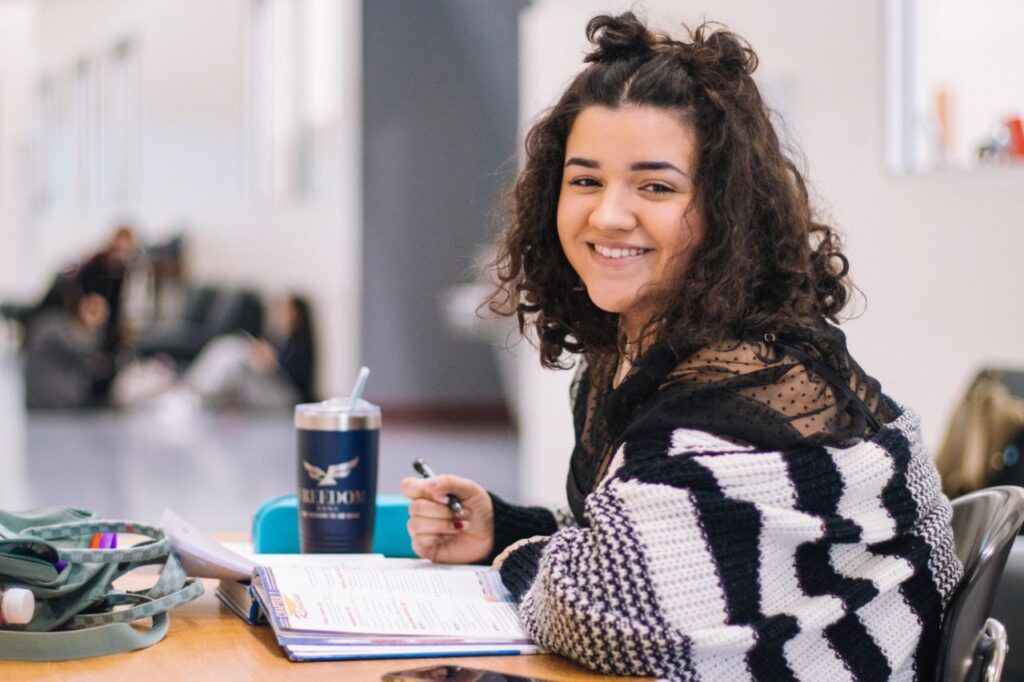Budget decisions are made with students and families.


School budgets tend to spotlight the workings of systems and who benefits from those systems. To re-center those structures, Californians for Justice aimed to include marginalized students and families in district and school budget development, thus centering discussions of equity. Involved youth conducted school climate surveys, and then identified specific areas of funding focus.






In this case study, adults and students share decision-making in order to see the system and design change. Learn more about the student-powered improvement framework here.

Californians for Justice has supported schools and districts to rebuild the budgeting process to center students and families.
Centering students and families in budget discussions offers a direct way to center discussions of equity. By tackling issues like where investments should be directed (and not directed) and for whom, students highlight how current systems work (or don’t work), and share decision-making about budget priorities.
A district budget advisory model was transformed to include student representatives from multiple high schools. The three-four students recruited from each school were “unlikely leaders” whose school experience included issues that the budgeting process could address, such as discipline or attendance.
The participatory budgeting structure called for five meetings (four hours each) during instructional time. According to a project organizer, “This structure was intentional in that it wasn’t a brief lunch meeting; it asked administrators to have students miss instructional time…right away you saying that these meetings, the insight, the movement students make are worth it.”
The youth began by learning about the potential looming budget cuts, the budgeting process, and how data informs budget decisions. Based on a data review, they identified specific areas that needed focus.
To further see the system, students realized they needed more data about school climate so they designed and implemented a climate survey for peers across the district. From the survey data, they uncovered information about which sites needed more support and what implications that had for budgeting. Ultimately the students made budget recommendations that more closely aligned spending with real student needs.
An organizer of this effort said this was not just a logistical change to select and add students to the advisory. “It was a lot of work. We had to shift a lot of perspectives first. We needed to have clear decision-making protocols and clear expectations for students and adults.”
“Adults don’t automatically have the perceptions or capacity to even know how to do this work. You can’t just hand people students to partner with. Otherwise, they can end up tokenizing or gatekeeping…even those who are most enthusiastic,” said one organizer. A strategy the group used was to build a definition of shared decision-making over time. Another strategy was to take the time with adults to assess their biases about youth. “Often, what adults think is shared decision making isn’t really shared decision making.” To create a culture that is with students, not for students, we need to push those beliefs,” said an organizer.
In this example, students and adults were provided various supports to understand the context and conditions in which budgeting occurs. Advice from a leader was to, “make sure you take time to develop your leaders. The worst thing I see is when folks bring impacted people to work groups and just ask what help they need. That is too broad; it doesn’t give anything the context or conditions they need to support the development of ideas or programs you would actually implement.”
Pay careful attention to creating space that is truly valuable. One organizer explained, “If you’re having a meeting that could have been an email, then [rethink it] and make sure that time you’re with youth has a purpose and is worth it for them and you.
Another reality is that this work takes time. “The tension is that people still want to/have to meet outcomes when a lot of this is process. It is about relationships and building trust. It takes a lot of time and patience. Doesn’t necessarily achieve outcomes right away,” said an organizer.